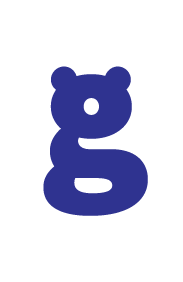JINGLE: The Secret Weapon Everyone Forgets
There are many tools available to compete in the digital marketing arena. Every brand should define itself through a set of distinctive elements that shape its identity—such as its logo, fonts, colors, and more. One of these elements, though often overlooked, is the jingle.
A jingle, or advertising tune, is a short, catchy melody commonly used in radio, television, or online. An ideal jingle is memorable, rhythmic, and sonorous—so that the brand or product instantly comes to mind whenever the tune is heard by a potential customer.
So what are the characteristics of a jingle that guarantees success?
An unforgettable and catchy melody is always a safe bet. If it carries an upbeat and energetic tone, the audience is likely to respond positively. Instrumentation—or the choice of musical instruments—can further emphasize the uniqueness of the jingle. Complex musical arrangements aren’t always necessary; sometimes just a few distinct notes, paired with well-chosen sound effects, are enough to make it stand out.
If a jingle is paired with a simple and memorable line or slogan that reinforces the brand’s core message or positioning, the effect can be powerful. A perfect example is McDonald’s iconic jingle with the line: I’m lovin’ it. Incorporating the brand name, logo, or other distinctive elements into the lyrics can be just as effective. A clear and compelling call to action (CTA) can also work well, directly encouraging the audience to take specific steps—such as making a purchase or visiting a website.
The overall tone of the jingle should match the brand’s image and resonate with the target audience. The mood can be upbeat, fun, emotional, or humorous. Opting for a sad or melancholic jingle is generally a poor choice—while it might be original, associating the brand with negative emotions is rarely advisable. Jingles have been a staple of advertising across media for decades, which gives them a strong nostalgic appeal today. Many consumers fondly recall jingles from their childhood. Hitting the “right note” can create a powerful emotional connection between the listener and the brand. Nostalgia can be used to craft jingles that evoke familiarity and comfort—leading to more positive brand associations.
As for jingle length, there’s no fixed rule or formula for success. The key is brevity and memorability. Some musical ideas need just a few seconds to evoke the desired emotion; others may take up to a minute. The ideal length typically depends on the planned use of the jingle. Imagine if the Netflix intro lasted 16 seconds and played before every episode on the platform—it would likely become irritating after 20 episodes.
That’s why a jingle must adapt to the specific marketing channel. If it’s intended for broader use, it should be flexible. Netflix, for instance, commissioned a special version of its intro for feature films in theaters. The result is a 16-second orchestral version composed by Hans Zimmer—dramatic and cinematic, designed specifically for the big screen.
The Jingle as a Winner
So what gives jingles an edge over other brand elements? You’ve probably experienced this many times—a song gets stuck in your head, and it pops up again during random moments. That’s exactly the purpose of a jingle. Because they’re short and distinctive, they’re much easier to recall in connection with a brand.
One of the main goals of advertising is to leave a lasting impression on the consumer. Jingles are incredibly effective in achieving this due to their innate memorability. They rely on repetition, rhyme, and melody to create a catchy tune that’s hard to forget. A well-crafted jingle can linger in the listener’s mind long after the ad has ended.
Another strength lies in their uniqueness. Unlike most brand elements—which are primarily visual—jingles use sound to set the brand apart, even in an oversaturated market. Of course, there are limits: you can’t exactly play a three-second jingle on a city billboard 24/7. But otherwise, jingles are highly versatile and can be widely used across various digital channels.
And perhaps the best part? Unlike a logo—which has fixed rules like moodboards, fonts, and color guidelines—a jingle can evolve and adapt to different marketing campaigns. This provides flexibility and cost-effectiveness in brand communication. A great example is Hyundai’s jingle: the melody stays consistent, but its execution changes from campaign to campaign. Each version feels fresh, yet the core remains recognizable.
Conclusion
Jingles remain a powerful marketing tool thanks to their ability to create emotional connections, enhance memorability, strengthen brand identity, adapt across platforms, and evoke nostalgia. Still, it’s important to weigh both the advantages and potential limitations of jingles when planning advertising campaigns. A well-crafted and strategically used jingle can have a significant impact on brand awareness and long-term success.

